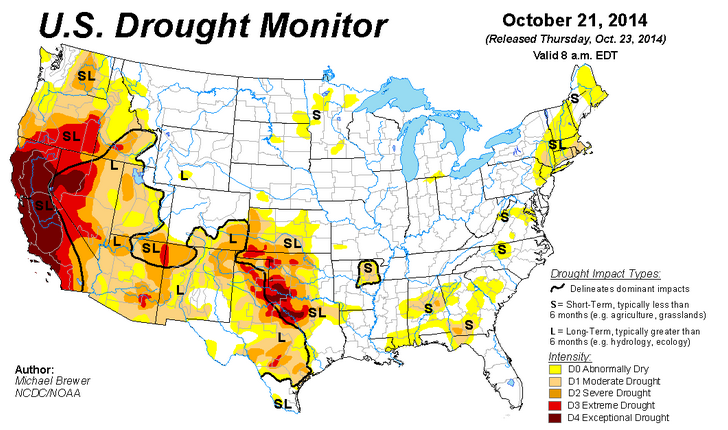The American West is experiencing the worst draught in memory and causing unprecedented measures across the region as well as stimulating a wide range of innovations which may prove valuable as more and more parts of the planet experience water stress – the technical term for shortages over the years to come.
According to the United States Draught Monitor, a weekly update produced by a number of U.S. government agencies and the University of Nebraska, 68% of the American West is “abnormally dry” and 34% is facing severe, extreme, or exceptional drought.
While scientist debate how long the situation will last and whether it is the result of global climate change or cyclical variations of the local climate, communities across the affected states have had to react and done so in different ways.
If there is a water shortage, the basic options are to find more water, use less but contiue more or less as before , and change our thinking about some pretty basic ideas.
Get More
In the West, the primary way to supply water to its growing cities has been to bring it from somewhere else. In 1910, a river in the region of Yosemite National Park, the Hetch Hetchy was dammed, despite environmental opposition, and a 180 mile (290 km) aquaduct built to bring the water to San Francisco. That systems still brings water to 2.4 million residents of the Bay area. At about the same time, Los Angeles gained control of Owens Valley, 250 miles (400 km) away in an historically controversial move that would inspire the film, Chinatown with Jack Nicholson playing the role of Jack Gittes, a private investigator who stumbles across the plot to grab the valley’s water.
As the drought has affected the entire region and such big water projects have become politically difficult, the City of San Diego has given a contract to a consortium which is investing $1 billion on the largest desalination plant in the Western Hemisphere in Carlsbad California. When it opens in 2016 the plant, which has fought off 14 lawsuits to date will produce 50 million gallons (227,000 cubic meters) per day.

Use Less
 Las Vegas is one of the fastest growing cities in the United States and is also located in the middle of the dessert. The county receives most of its water from Lake Mead, the artificial lake which was created as a result of building the Hoover dam across the Colorado River in the 1930s. The problem is that Lake Mead is currently at its lowest level since it began filling up in 1937 and is getting dangerously close to the height of the intake lines to the city.
Las Vegas is one of the fastest growing cities in the United States and is also located in the middle of the dessert. The county receives most of its water from Lake Mead, the artificial lake which was created as a result of building the Hoover dam across the Colorado River in the 1930s. The problem is that Lake Mead is currently at its lowest level since it began filling up in 1937 and is getting dangerously close to the height of the intake lines to the city.
The good news is that Las Vegas has managed to decrease its water use per capita over the years. The bad news is that the city and the surrounding Clark County has grown from just over a quarter million people in 1970 to over 2 million today. It also still has relatively inexpensive water.
 As a result,the city has embarked on a so called Water Smart initiative to encourage homeowners to replace their household appliances with water saving machines, faucets and toilets as well as replace thirsty grass for native plants and water efficient landscaping. The program even has approved car washes and people are discouraged from washing their own cars as they typically use much more water. Similar water smart programs can be found in many cities across the U.S.
As a result,the city has embarked on a so called Water Smart initiative to encourage homeowners to replace their household appliances with water saving machines, faucets and toilets as well as replace thirsty grass for native plants and water efficient landscaping. The program even has approved car washes and people are discouraged from washing their own cars as they typically use much more water. Similar water smart programs can be found in many cities across the U.S.
Change Thinking
Much of the new thinking about water is inspired by Israel which has had to figure out how to use less water since its inception and innovation has been at the center of much of its progress. Drip irrigation is perhaps the clearest example of this which uses significantly less water than the center pivot system developed in the 1950s. Israeli technology is also being used in the Carlsbad project discussed above and aspects of its water use strategies is, according to Bloomberg, being looked at carefully across the dry American West.
The size of the market opportunity concerning water the American West around the world will be explored in subsequent posts in this space. At the heart of the issue is the price of water which has huge implications for the way it is used but also stirs deep political divisions.


